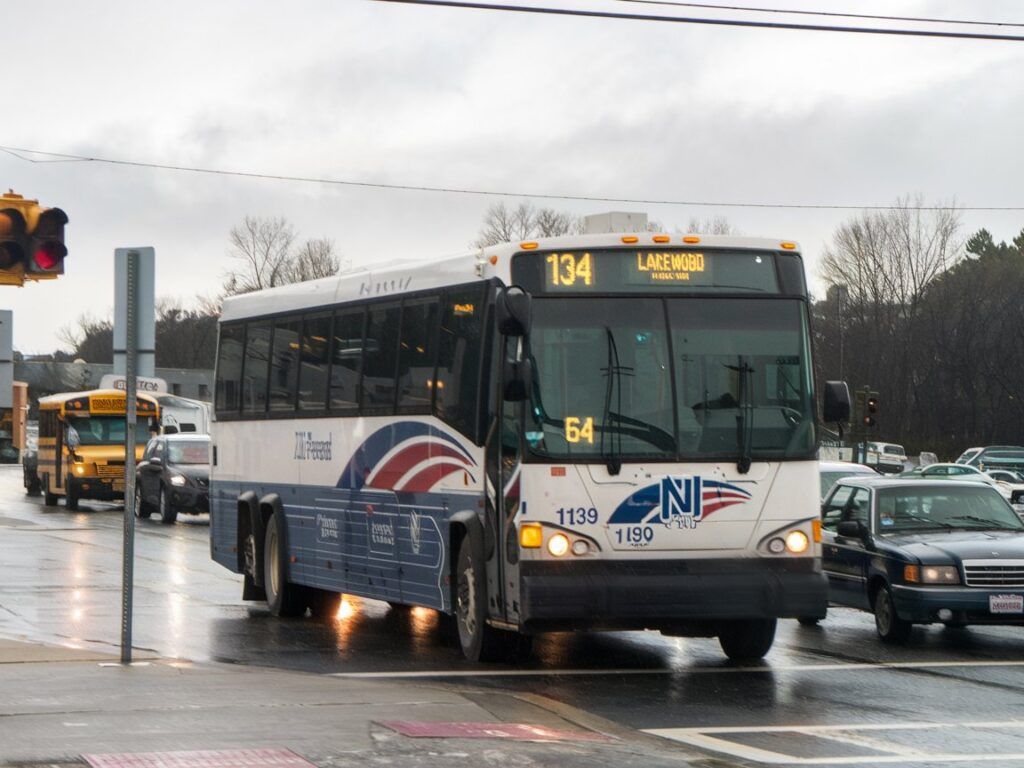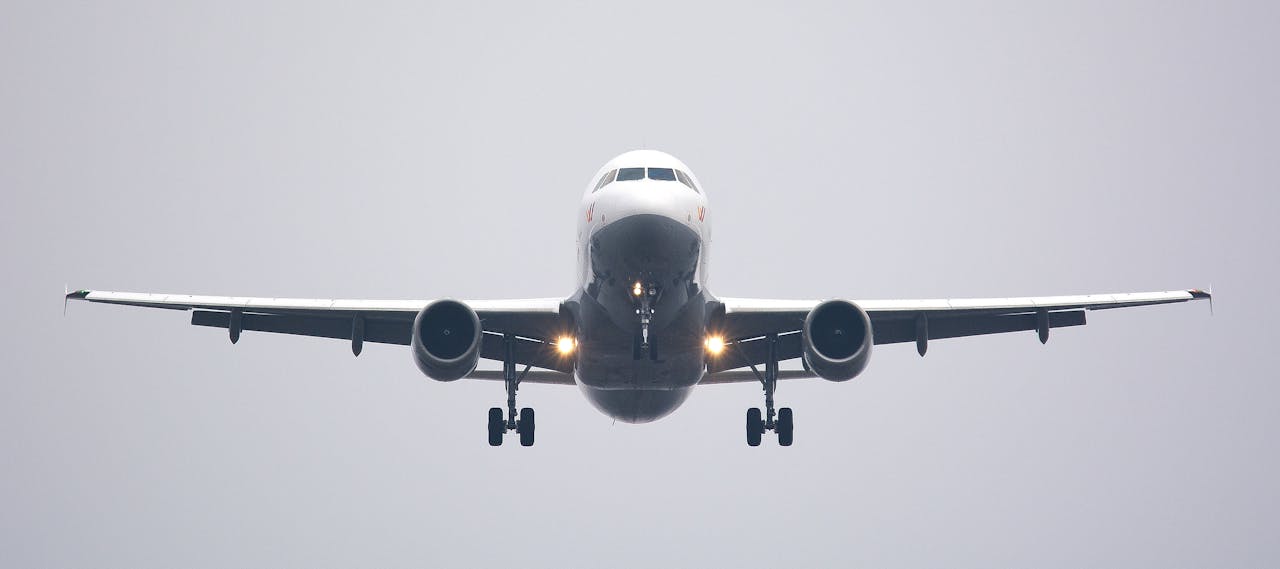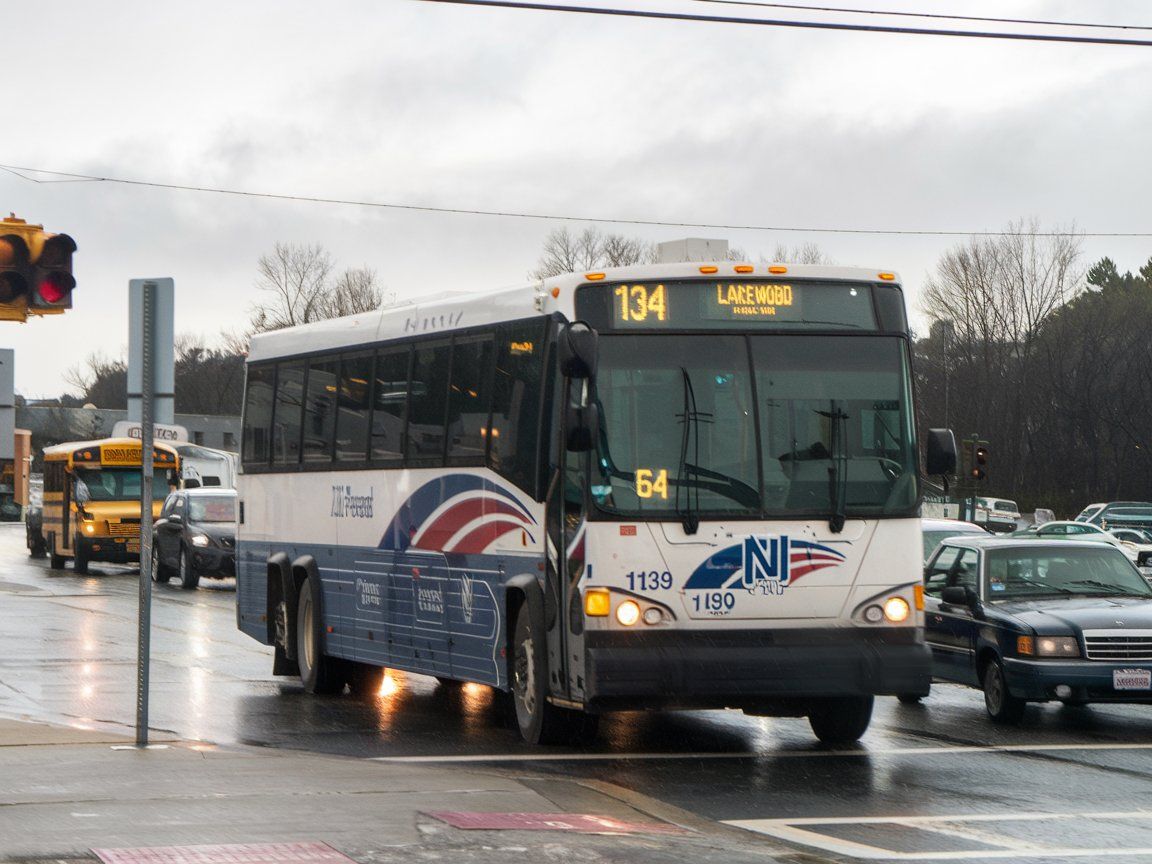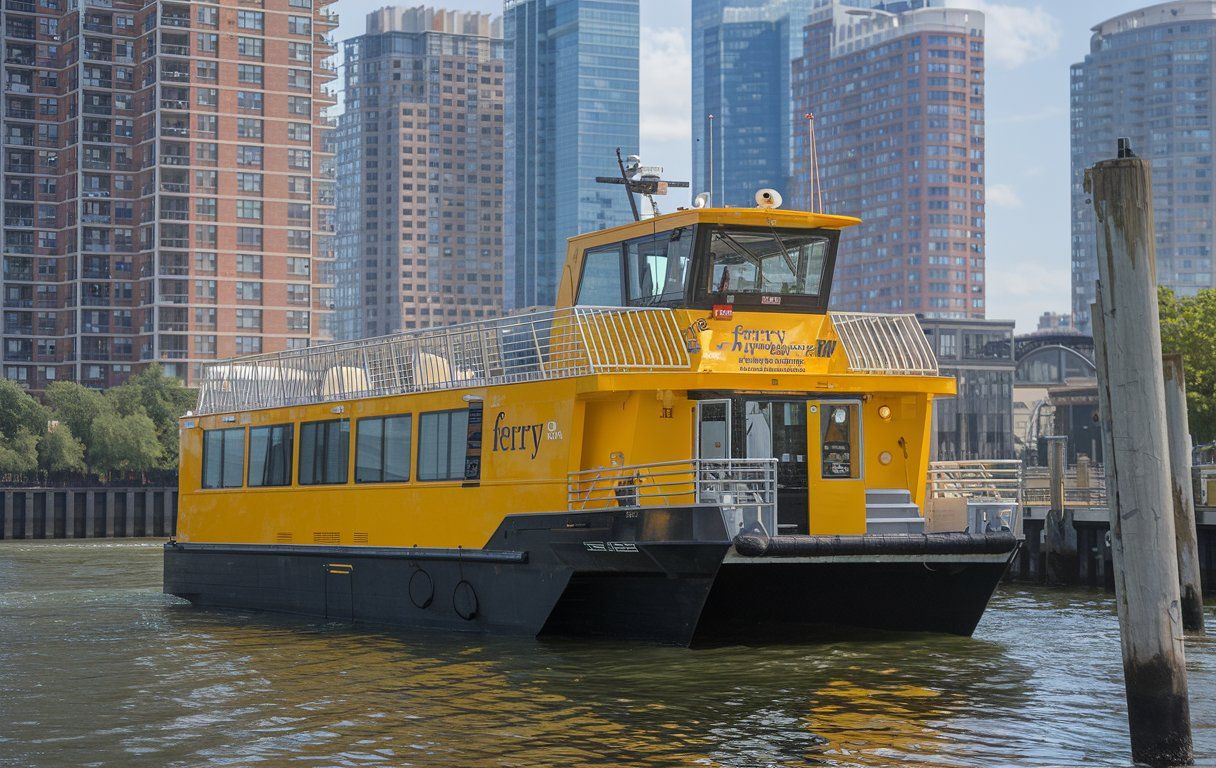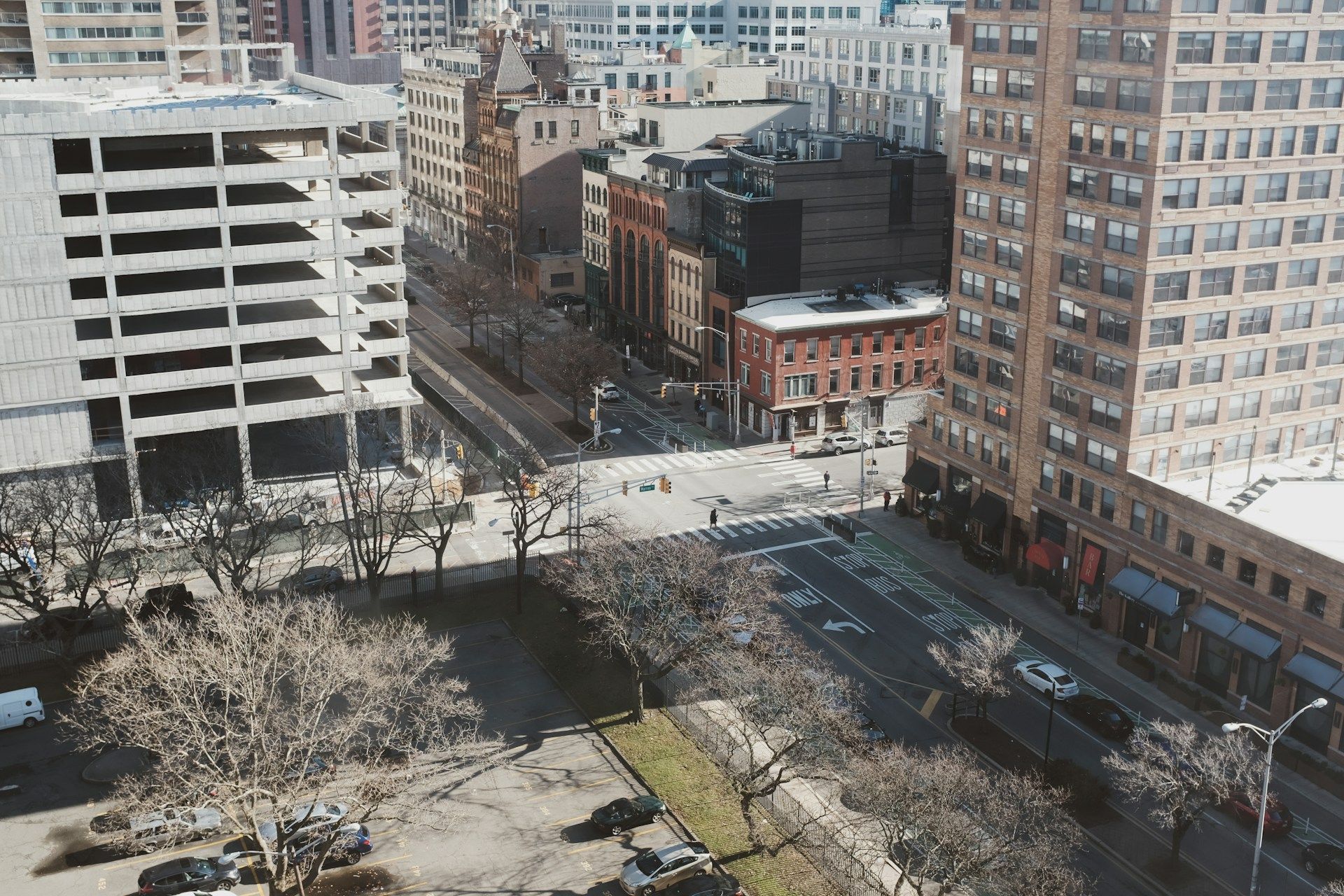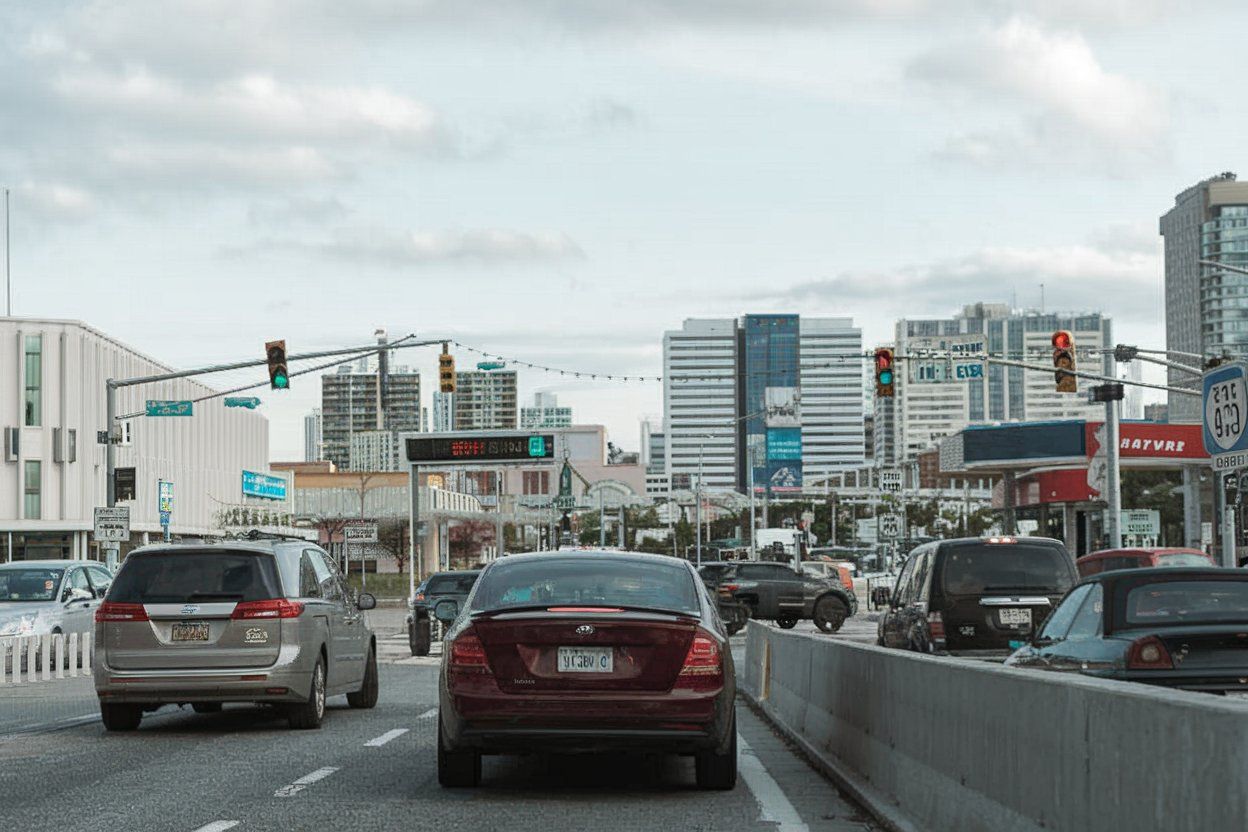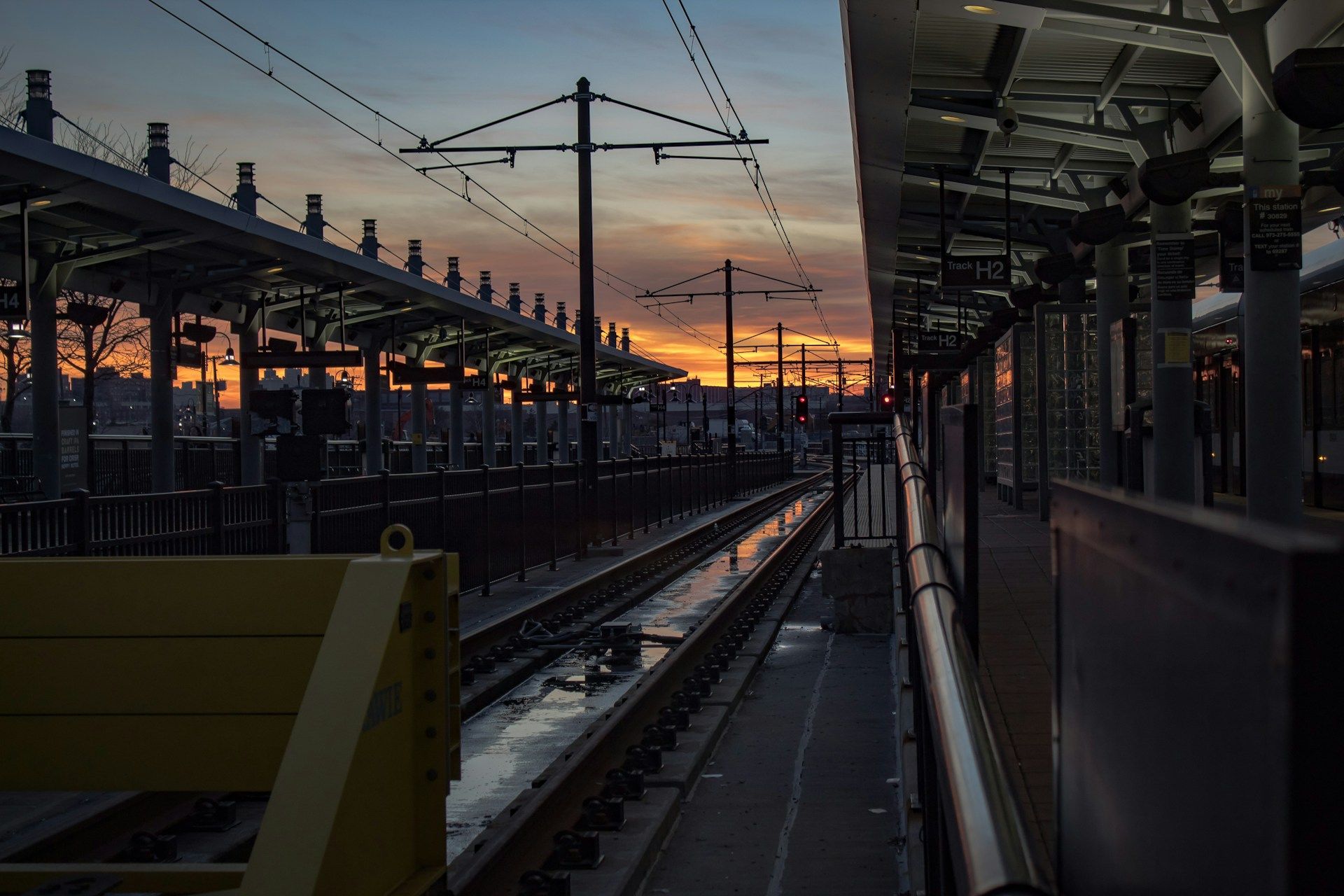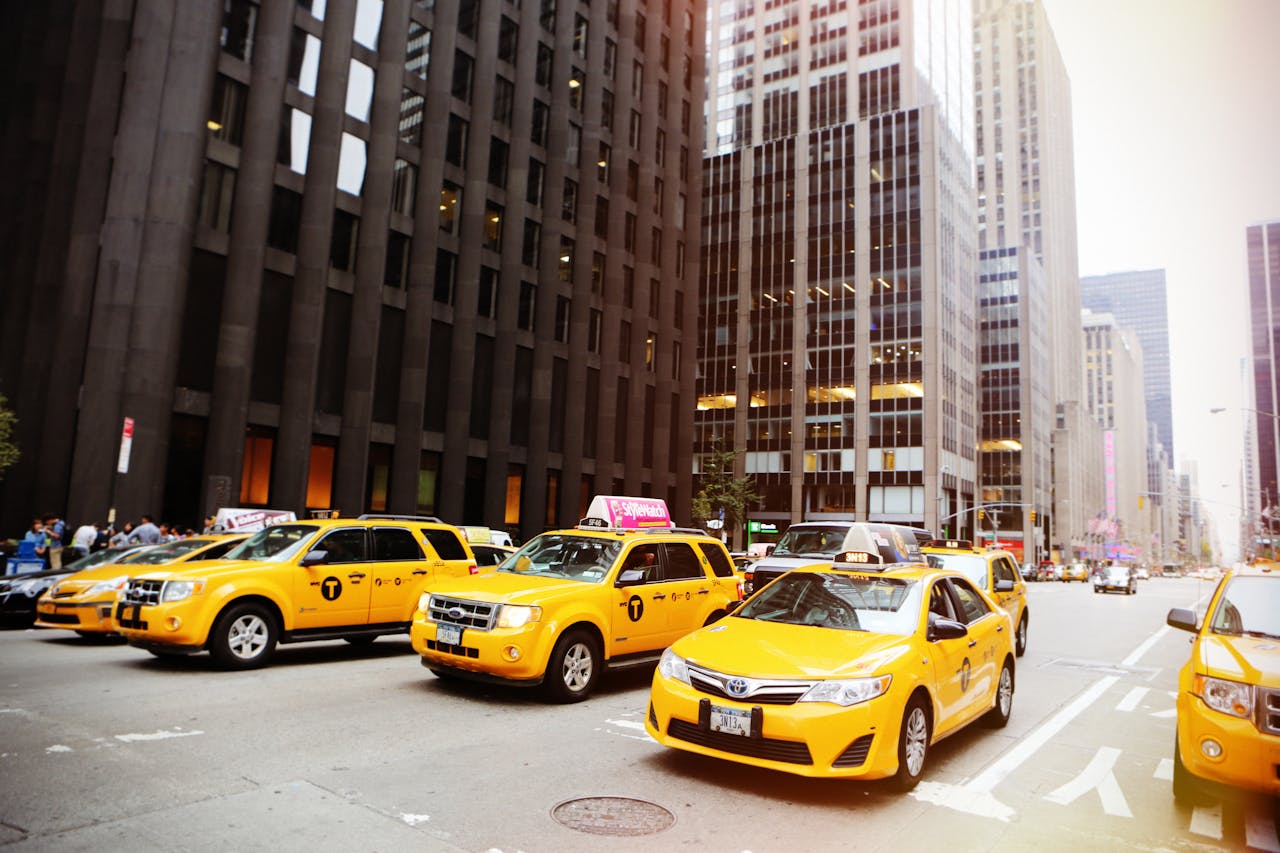Getting around Jersey City without a car is surprisingly straightforward, thanks to the city’s extensive bus network. NJ Transit runs a ton of bus routes connecting all corners of Jersey City and even reaching nearby spots like New York. The Journal Square Transportation Center acts as the main hub, where lots of routes converge—so switching buses isn’t much of a hassle.
The bus system here is both budget-friendly and practical. Buses run pretty often during weekday rush hours, though you’ll notice less frequent service on weekends. Most buses want exact change, but you can also use NJ Transit tickets or passes from stations or the NJ Transit mobile app.
Easy booking across hundreds of accommodations from luxury high-rises to unearthed brownstone treasures.
Browse Accommodations Now
Planning a trip? Try NJ Transit’s MyBus service to check real-time arrivals. It’s honestly a game-changer if you hate waiting. Buses connect easily with other options like PATH trains, light rail, and even the Citi Bike NJ program if you’re feeling ambitious and want to mix things up.
Overview of Bus Transportation in Jersey City
Bus transportation really forms the backbone of Jersey City’s public transit system. These buses link neighborhoods, tie into other transit options, and provide essential mobility for both locals and visitors.
Role of NJ Transit
NJ Transit runs most of the bus routes in Jersey City. Their network covers local streets and major roads all over town. You’ll spot NJ Transit buses by their white and blue paint job.
With the NJ Transit app, you can track arrivals in real time and buy tickets right on your phone. No more digging for cash or waiting in line for tickets.
Some of the most popular routes are the 80, which connects Jersey City to New York City through Journal Square, and the 87, which covers the waterfront. Local routes generally run every 15–30 minutes on weekdays, but slow down a bit on weekends.
Bus fares depend on zones, but most local trips cost about $1.60–$2.00. Seniors, folks with disabilities, and kids get discounts.
Integration With Other Public Transit
Jersey City buses don’t just go it alone—they’re part of a bigger network that includes PATH trains, the light rail, and ferries.
The Hudson-Bergen Light Rail links up with several bus routes at stations like Liberty State Park and Exchange Place. This makes it pretty easy to switch between buses and trains.
PATH trains to Manhattan stop at several Jersey City stations, and buses make regular stops there too. This setup really helps the roughly half of residents who use public transit to commute to work.
Major hubs like Journal Square Transportation Center and Hoboken Terminal let you transfer between buses, trains, and other services.
Lots of bus routes also connect to the NY Waterway ferries along the Hudson River waterfront, giving you another way to get into Manhattan.
Importance to the Community
Buses matter a lot in Jersey City. They give everyone, especially those without cars, a way to get around affordably.
For many locals, buses are their main way to reach jobs, schools, healthcare, and shopping. The network covers most neighborhoods, so transit is rarely out of reach.
Buses help cut down on traffic and parking headaches in this busy city. Choosing public transit means less pollution and a more sustainable environment.
The bus system also helps the local economy by connecting workers to jobs across the region. Businesses near bus stops see more foot traffic, which is always good.
When big events like parades or festivals come around, NJ Transit usually adds extra service to handle the crowds. It’s a nice example of the system adapting to what the community needs.
Major Bus Routes and Operators
Jersey City’s public transportation offers plenty of bus options connecting neighborhoods and nearby towns. Different companies run these services, and they link up with trains and ferries for even more flexibility.
Key NJ Transit Bus Lines
NJ Transit runs many bus routes in Jersey City that connect to nearby areas. Some well-used routes include:
- Route 1: Journal Square to Newark
- Route 2: Journal Square to Secaucus
- Route 80: Exchange Place through Greenville to Bergen Point
- Route 86: Journal Square to Newport Mall via Hoboken
These buses come pretty often during rush hour—every 15–20 minutes or so—and slow down a bit at night and on weekends. You can pay with cash or use a TAP card for discounts. Most buses have bike racks and are wheelchair accessible.
The NJ Transit app helps you track buses in real time and plan trips, which is a lifesaver when traffic causes delays.
PATH Connections
Bus routes in Jersey City connect smoothly with PATH train stations, making trips to Manhattan or other parts of New Jersey pretty straightforward.
Some of the main bus-to-PATH connections:
- Journal Square Transportation Center: The biggest hub, where many NJ Transit buses meet PATH trains
- Exchange Place: Several bus routes stop near this PATH station
- Grove Street: Buses connect to this downtown PATH station
- Newport: Bus routes link to the Newport PATH station
These connections make planning trips easy. For example, you can hop on a bus to Journal Square and then catch the PATH to Manhattan in about 20 minutes.
Bus schedules are timed to match PATH trains during rush hours, so you won’t be stuck waiting too long.
Connections to Rail and Ferry Services
Besides buses and PATH, Jersey City’s got other transit options that all work together.
Rail connections:
- The Light Rail links up with several bus routes at stations like Liberty State Park and Exchange Place
- NJ Transit trains at Hoboken Terminal are accessible by bus from Jersey City
- Secaucus Junction, a major rail hub, connects to several Jersey City bus routes
Ferry services:
- NY Waterway ferries at Paulus Hook connect to bus routes for easy access to Manhattan
- Liberty Landing Ferry services are close to bus routes near Liberty State Park
During peak hours, buses run more often to line up with ferry and train schedules. Many transit hubs have digital screens showing upcoming departures for all services.
Find available hotels and vacation homes instantly. No fees, best rates guaranteed!
Check Availability Now
You can use a single payment card across buses, PATH, and Light Rail, which makes transfers less of a headache.
Schedules and Real-Time Information
Navigating Jersey City by bus is way easier when you know how to find schedules and get real-time updates. NJ Transit’s got a few tools to help you plan your ride and stay in the loop.
Finding Bus Schedules
NJ Transit posts full bus schedules for every route in Jersey City. You’ll find these online under the “Bus Schedules” section of their website—just look up your route number for all the details.
You can also pick up paper schedules at major transit hubs, like Journal Square. These printed timetables list all the stops and estimated travel times between major points.
Bus schedules usually include:
- Times for weekdays
- Weekend and holiday schedules
- Major stops and timepoints
- Which direction the bus is going
Routes sometimes change with the seasons, so double-check for the latest schedule. Most bus routes in Jersey City run from early morning (around 5:00 AM) until midnight, but service is lighter on weekends.
Using Real-Time Updates
NJ Transit’s MyBus system gives you real-time info about when your bus will show up at your stop. No more guessing or endless waiting.
You can get MyBus updates in a few ways:
- Text: Send your stop number to a special number
- Website: Check arrivals on the NJ Transit site
- Phone: Call customer service for updates
MyBus shows actual arrival predictions based on current traffic and bus locations, which is super useful during rush hour or bad weather.
Look for digital displays at major stops that show which buses are coming and how long until they arrive.
Mobile App Resources
A few mobile apps make it easier to get around Jersey City by bus, with real-time info right on your phone.
The official NJ Transit app has:
- Real-time arrival times
- Trip planning tools
- Service alerts
- Ticket buying options
Moovit is another popular app covering NJ Transit buses. It gives you real-time updates, route maps, and alerts. You can see exactly where your bus is, which is pretty handy.
Both apps let you save favorite routes and stops. You can even set notifications so you’ll know when your bus is getting close. These features come in clutch for commuters or anyone exploring new parts of Jersey City.
Fares, Passes, and Payments
To ride NJ Transit buses in Jersey City, you’ll want to get a handle on fares and payment options. There are a few ways to pay, and you can save money if you ride often.
Understanding Fare Structures
NJ Transit charges bus fares based on how many zones you travel through. The more zones, the higher the fare. Prices start around $1.80 for short trips and go up to $55.75 for longer rides across multiple zones.
One-way tickets work well if you don’t ride often. If you’re a regular, passes offer unlimited trips for a set period and can save you some cash.
The fare system might seem a bit confusing at first, but it’s meant to be fair based on distance. Local trips within Jersey City usually cost less than express routes to other cities.
Always check your route before boarding so you know which zones you’ll cross. It’s the best way to avoid surprises.
Payment Methods
You’ve got a few options to pay for your bus ride in Jersey City:
Cash: Drop exact change in the farebox when you board. Drivers can’t make change, so come prepared.
Mobile app: Buy tickets through the NJ Transit App on your phone. Activate your ticket before boarding and show it to the driver.
FARE-PAY card: This new contactless card from NJ Transit lets you tap and go, speeding up boarding for everyone. It’s available at select locations, like some park & rides and on Newark Light Rail.
Monthly passes are also available for frequent riders. You can buy them through the app, at ticket windows, or from authorized retailers.
Discounts and Special Programs
NJ Transit offers good savings for regular bus riders:
Monthly passes: Save up to 30% compared to paying for individual trips. You get unlimited travel on certain routes for a whole month.
Student discounts: Eligible students can get reduced fares with the right ID. Check with your school or NJ Transit for details.
Senior citizen fares: Riders 62 and up get lower rates—just show your ID.
Reduced fare programs: People with disabilities can apply for special ID cards to qualify for discounts.
Luxury stays to cozy apartments await, all with instant booking. Find the best deals!
Browse Jersey City Stays
Some employers offer corporate discount programs. It’s worth asking your HR department if your company participates.
Bus Stops and Accessibility
Jersey City has a wide network of bus stops and plenty of features to make the system accessible for everyone. NJ TRANSIT keeps working to improve the experience for all riders.
Locating Bus Stops
Bus stops in Jersey City are marked with signs showing route numbers and destinations. You’ll find them along main roads and at big hubs like Journal Square Transportation Center, which connects you to multiple bus lines, PATH trains, and more.
Lots of stops have shelters for weather protection. At major stops, digital displays show real-time arrival info, so you’re not left guessing.
To find your nearest stop, try:
- The NJ TRANSIT app
- Google Maps
- The Transit app
- Physical maps at big transportation centers
Stops are usually spaced every few blocks, so you’re rarely too far from one in Jersey City.
Accessibility Features
NJ TRANSIT’s entire bus fleet is accessible, with lifts or ramps for easy boarding. This means everyone can get around town, no matter their mobility needs.
Onboard features include:
- Securement systems for mobility devices
- Priority seating near doors
- Audio announcements for upcoming stops
- Digital displays with stop info
Journal Square Transportation Center has elevators for anyone who can’t use stairs, making transfers a lot easier.
If you need more specialized transportation, NJ TRANSIT offers Access Link paratransit service for eligible riders who can’t use regular buses.
Many stops now have tactile paving to help visually impaired travelers find the boarding area. It’s a solid step toward making public transit work for everyone.
Alternative and On-Demand Transit Options
Jersey City also has a handful of flexible transit options beyond the usual buses and trains. These give residents and visitors more choices for getting around on their own terms.
Jersey City On-Demand Transit
Via Jersey City is the city’s affordable, app-based transit service, and honestly, it’s become a big deal—over two million rides and counting. This microtransit option helps folks reach key locations across the city, especially when regular bus routes just don’t cut it.
Booking a ride is pretty simple with the Via app. You just tap a few buttons, and a driver will swing by a nearby corner to pick you up. Most rides cost $2, so it’s budget-friendly enough for daily commutes or quick errands.
Via runs all over Jersey City, and get this: 80% of its rides go to minority communities. They’ve even rolled out weekend service, which makes it handy for running errands or just getting out and about.
You’ll usually wait around 15 minutes, give or take, depending on how busy things are or where you’re at. The vehicles are clean, comfortable, and yes, they accommodate riders with disabilities.
Comparison to Other Transportation Options
Via really stands out compared to traditional transit. Unlike fixed bus routes, Via drops you closer to where you actually want to go. It’s cheaper than taxis or rideshares like Uber and Lyft, and the price doesn’t jump just because demand spikes.
Citi Bike is another option, with over 50 stations dotted around Jersey City. If you’re just going a short distance, hopping on a bike gets you some fresh air and lets you dodge the worst of the traffic.
Here’s a quick look at how the main options stack up:
| Option | Cost | Flexibility | Coverage |
|---|---|---|---|
| Via | $2 per ride | High | Citywide |
| Citi Bike | $3.50/ride or $15/month | Medium | 50+ stations |
| NJ Transit Bus | $1.60-$2.55 | Low | Fixed routes |
| Rideshare Apps | $10-25+ | High | Everywhere |
If you have a disability, Access Link paratransit service offers specialized transportation when regular transit just isn’t doable.
Navigating Traffic and Service Disruptions
Bus travel in Jersey City isn’t always smooth sailing. Traffic jams and sudden service changes can really throw off your schedule. Figuring out how to deal with these hiccups can save you a lot of hassle, and honestly, some headaches, too.
Traffic Impact on Bus Service
Jersey City streets get packed, especially during rush hours (7-9 AM and 4-7 PM). All that congestion slows down buses and messes with their schedules.
Columbus Drive is a regular trouble spot, mostly because of construction work and emergency repairs. If you’re heading that way, plan for extra travel time.
Springfield Avenue sometimes gets blocked off because of police activity, which means detours—NJ Transit’s alerts mention this for routes 25, 70, and 375, usually between Ellis Avenue and Avon Avenue.
During heavy traffic, buses can end up bunched together or just show up late. It’s especially bad downtown and near the Holland Tunnel entrances.
Real-Time Updates During Disruptions
NJ Transit gives you a few ways to keep tabs on service changes and delays. Their mobile app is probably your best bet for real-time updates, and you can buy tickets straight from your phone.
When things go sideways, check the “Travel Alerts and Advisories” on NJ Transit’s website. You’ll see current detours, delays, and other changes that might mess with your route.
If you want instant updates, sign up for text alerts on the NJ Transit site. That way, you’ll get pinged right away if your usual bus is running late or rerouted.
Major bus stops have digital displays showing arrival times and alerts, and a lot of buses announce detours or delays onboard.
For the latest info, you can also check Twitter (@NJTRANSIT), where they post quick updates during major disruptions or emergencies.
Improvements, Developments, and Administration Initiatives
Jersey City’s really been stepping up its public transportation game lately. Local officials and transit agencies have kicked off a bunch of projects to make bus travel smoother, greener, and more accessible.
Fulop Administration’s Transit Projects
The Fulop administration has put transit improvements front and center. One of their biggest wins is the Via on-demand service, which already hit two million rides. It’s affordable, app-based, and a real lifeline for people in neighborhoods where regular transit falls short.
About 80% of Via rides go to minority communities, which really shows the administration’s push for transit equity. By filling the gaps in the bus network, Via gives folks more flexible transportation options.
They’re also backing Transit-Oriented Development, building new housing and businesses near transit hubs so people don’t have to rely as much on cars.
Jersey City’s Division of Transportation Planning keeps working on ways to make the whole system safer and more efficient for everyone.
Find the perfect hotel or vacation rental. Instant booking, no fees!
View Top Stays
Upcoming Upgrades to Bus Services
NJ Transit’s rolling out a bunch of changes across the 23 bus routes running through Jersey City. Here’s what’s on the horizon:
- Technology upgrades – They’re putting up new digital displays at big stops, so you’ll finally see real-time arrival info without guessing.
- Fleet modernization – Bit by bit, the old buses are heading out, replaced by hybrid and electric ones. About time, right?
- Route optimization – Schedules and routes will shift to bump up service where people actually need it most.
The North Jersey Transportation Planning Authority threw several Jersey City projects into its Transportation Improvement Program. They’ll upgrade bus stop infrastructure, make it easier for pedestrians to reach transit, and add dedicated bus lanes to some of the worst traffic corridors.
You’ll probably notice smoother connections between buses and PATH trains, so switching from one to the other should get less painful. All these changes are supposed to cut down travel times and, hopefully, make your daily ride a bit less stressful.

